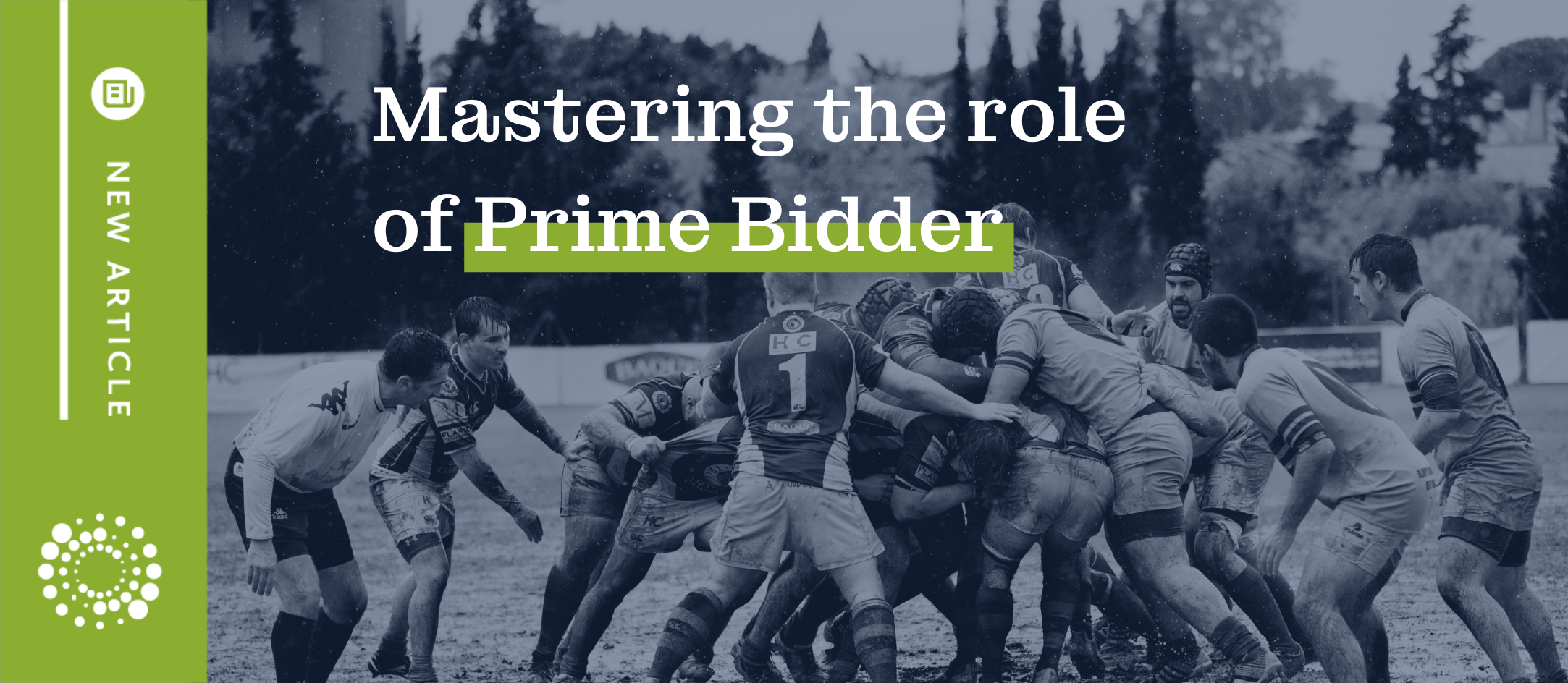Mastering the role of Prime in a bidding consortium: a few hard-learned lessons
For large complex IT projects in the public sector we work on frequently, consortium bidding is a common strategy. Playing the role of the ‘prime’ – the leading or primary bidder – is both a responsibility and an art.

Building a well-balanced team
Principle: Consortium members should complement each other’s strengths.
Take for instance the fictional ‘Octane IT’*, which led a winning bid for a massive data centre overhaul for the city of Birmingham. Octane IT strategically selected partners with diverse strengths: one excelled in data centre hardware that was preferred by the customer, another had top-tier expertise in cybersecurity and the latest AI service support tech (everyone is obligated to mention AI today, so I’m joining the party), while another was a local firm with an intimate understanding of Birmingham’s urban infrastructure. This well-balanced team made a compelling case to the city, demonstrating both technical prowess and local sensitivity/demonstrable social value.
Start with the needs and preferences of the customer, layer on your capabilities and advantages, and then work out what’s missing. Who is best placed (in the customer’s eyes) to fill any gaps. This is where a BD team that understand their customer and a supply chain that really know the market can come into their own.
All too often companies partner with those they know or companies that are similar to themselves. Embrace diversity and find the best people for this particular opportunity.
Transparency is paramount
Principle: Be upfront with your partners about the bidding process, project execution plans, and potential risks and weaknesses.
Consider the case of the ‘Tech Quorum’ competitor to Octane IT. They lost the bid because one of their consortium members had been kept in the dark about a critical risk assessment. When this came to light during the dialogue stage (in front of the customer), the consortium was seen as unreliable and fragmented, ultimately costing them the contract.
Think about how you will be seen in the eyes of the customer again – will you come across as a single team that will deliver together, or a series of companies that will stand in a circle pointing at each other when things go wrong in delivery. This is even more critical if you’re up against competitors who will deliver on their own. Writing about ‘One Team’ culture is not enough…
Invest in relationship building
Principle: Foster a relationship built on trust and respect with each consortium member.
‘Big Infrastructure Machines’, a major player in the IT industry for many years, was notorious for imposing their decisions on consortium partners. During a bid for a public healthcare system, this approach backfired when a key partner dropped out mid-process due to the inevitable conflicts, much to the surprise of Big Infra Machines. The loss of this partner’s unique healthcare software implementation experience doomed the bid.
To be an effective prime, be the adult in the room, cultivate relationships, value input, and keep the decision-making process inclusive. Maybe we should rename “Prime” something less hierarchical? Something more like Servant Leadership?
Fairness is a fundamental human concern and need. Who is doing all the work, and who is getting all the spoils? Get the fairness right, build the trust with respect and transparency.
Get the commercials right
Principle: Confirm the financial health of each consortium member and arrange for suitable guarantees.
‘Accurate IT’, despite having an innovative solution for a public transportation IT bid, lost because they failed to assess the financial health of a second-tier consortium member. The company’s subsequent bankruptcy raised questions about the overall consortium’s financial stability (even though they were a minor element of the solution), leading to their disqualification. Don’t let your decision-making be called into question. Apply the commercial principles you would to any supplier to your partners – the customer certainly will. Hopefully we should not have to say this, but if the price is too good…it’s too good.
Don’t be blinded by the desire to win. If you’re lucky you will get found out by the customer and lose; if you’re unlucky you will be picking up the pieces in delivery.
Last words
Leading a consortium is no small task – it requires a keen understanding of the bidding process and customer, meticulous team building, unwavering transparency, and sound commercial acumen. In fact, it’s a little like leading any bid team… However, the reward is the opportunity to be part of transformative projects that could catapult your reputation to new heights. Remember – in a consortium, you’re only as strong as your weakest link. Every cliché is based on truth. As a prime, your role is to ensure that every link in your chain is strong, capable, and reliable.
*All names and situations have been tinkered with to the protect the innocent ; )
